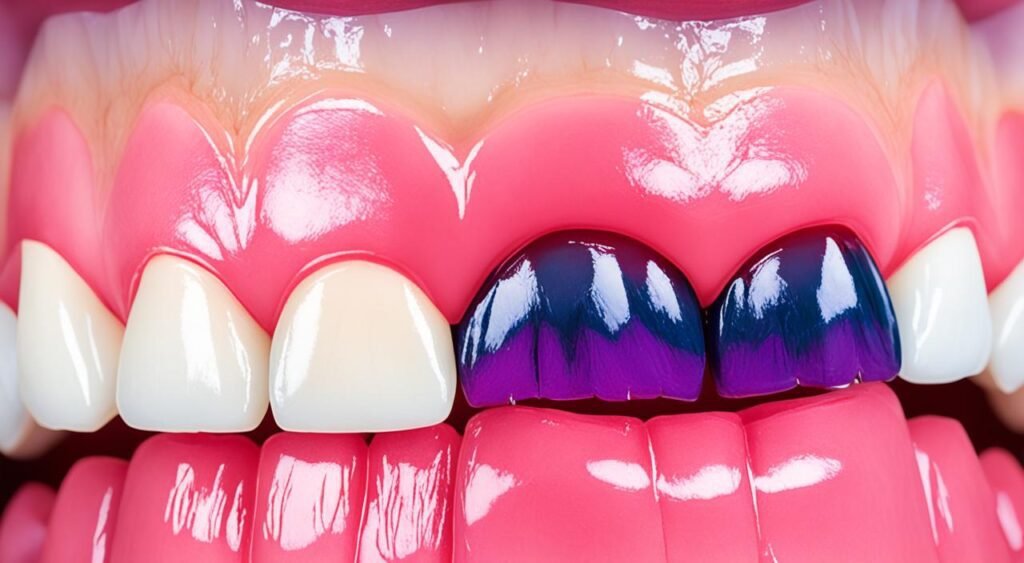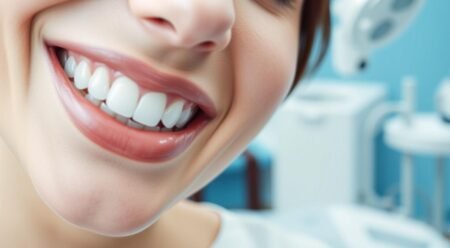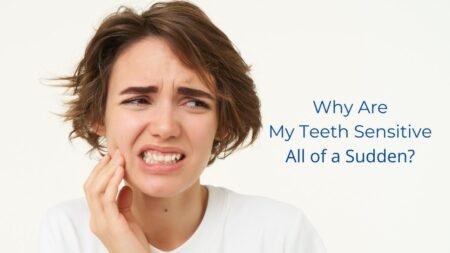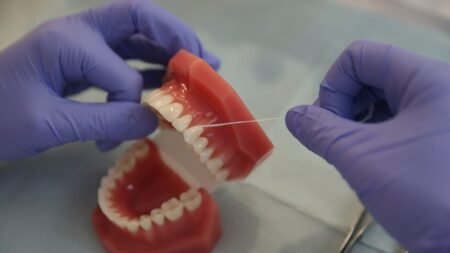Ever felt pain after flossing, even though it’s good for your mouth? Many people do, leaving them puzzled. It’s important to find out why this happens so you can ease the pain and keep your smile bright. Things like wrong flossing methods, sensitive teeth, and gum disease can cause the pain.
In this article, we’ll look into why your teeth might hurt after flossing. We’ll also share ways to make flossing pain-free. This way, you can take care of your teeth without discomfort and fix any problems.
Understanding the Causes of Teeth Hurt After Flossing
Teeth may hurt after flossing for many reasons. Knowing these causes helps you find the right dental care tips. This can make your mouth feel better and improve your oral hygiene.
You might feel pain after flossing because of wrong techniques, sensitivity, or dental problems.
Common Reasons for Discomfort
- New to Flossing: If you’re new to flossing, you might press too hard, hurting your gums.
- Sensitive Teeth: Teeth can be sensitive if the enamel is worn or nerves are exposed. This can make flossing painful, especially with hot or cold foods.
- Loose Dental Restorations: Old dental work, like crowns or fillings, can make parts of your teeth sensitive. This can cause discomfort.
- Incorrect Tools: Using the wrong flossing tools can make pain worse. It’s important to use the right tools to avoid gum pain after flossing.
Impact of Flossing Technique on Pain
Your way of flossing greatly affects whether you feel pain after. Making some changes can help ease the pain:
- Gently Slide Floss: Move floss gently between teeth with a back-and-forth motion. Don’t push too hard, as this can hurt the gums.
- Technique Adjustment: Bad flossing methods can cause irritation and plaque buildup. Learning the right way to floss can make a big difference.
- Consultation with Professionals: If you still have pain even after changing your technique, talk to your dentist for personalized advice.
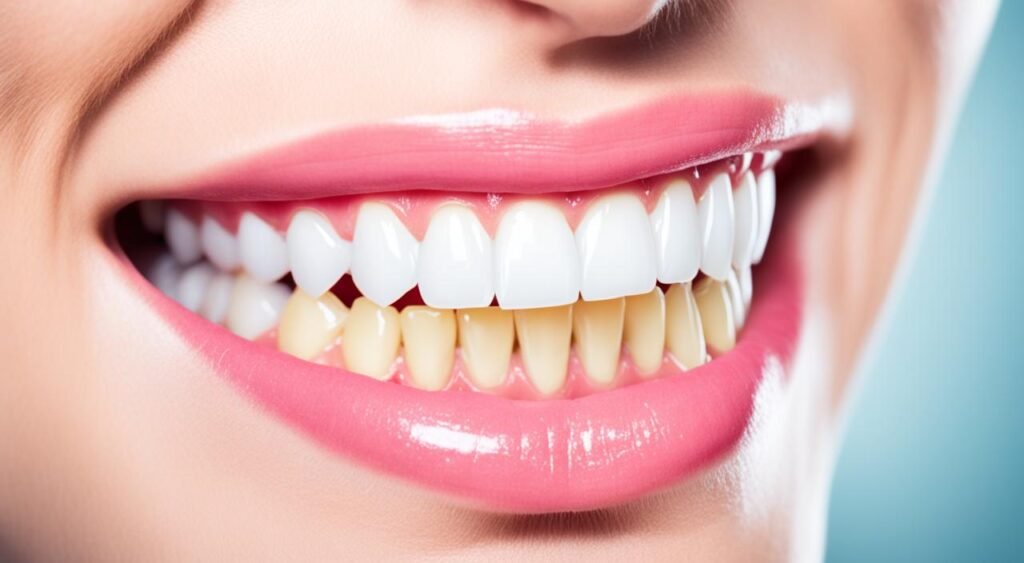
Identifying Tooth Sensitivity
Feeling pain while flossing or brushing can mean there’s an issue with your teeth. It’s important to know what causes tooth sensitivity to handle it well. Some things make teeth more sensitive, so it’s good to know them.
What Causes Sensitive Teeth?
There are many reasons why teeth become sensitive. Each reason affects people in different ways. Knowing these can help you deal with sensitivity after flossing:
- Worn Enamel: When enamel wears off, it can expose nerves, causing pain when you eat or floss.
- Genetic Predisposition: Some people are naturally more sensitive due to their genes.
- Diet: Eating foods high in acid can make sensitivity worse by damaging enamel.
- Overzealous Brushing and Flossing: Brushing and flossing too hard can hurt soft tissues and make sensitivity worse.
How to Manage Tooth Sensitivity
Managing sensitive teeth is important. Here are some ways to help:
- Specialized Toothpaste: Use toothpaste made for sensitive teeth to ease the pain over time.
- Dietary Changes: Eat fewer acidic foods to lessen sensitivity’s impact on your mouth.
- Gentle Oral Care Practices: Choose a soft-bristled toothbrush and brush gently to keep teeth and gums healthy.
- Dental Consultation: See a dentist for treatments like fluoride or desensitizing agents to help with sensitivity.
If you keep feeling pain after flossing, it might mean you’re doing it wrong or have a bigger issue like cavities or gum disease. Learning to ease tooth pain after flossing is key, especially if the pain is often or bad. Regular dentist visits will keep your mouth healthy.
The Role of Gum Disease in Flossing Discomfort
Understanding how gum disease and dental pain after flossing are linked can help you manage discomfort better. It’s important to spot the early signs of gum disease. This can prevent more serious dental problems.
Symptoms of Gum Disease
Gum disease shows many signs that point to health issues. Here are some key symptoms you might see:
- Swollen Gums: Inflammation can cause pain or discomfort when you floss.
- Bleeding Gums: Bleeding often means you have gum disease.
- Persistent Bad Breath: Chronic bad breath can be a sign of gum problems.
- Deep Pockets Around Teeth: Advanced gum disease can create pockets that trap bacteria, causing more issues.
How Flossing Helps Prevent Gum Disease
Flossing regularly is a key way to stop gum disease. Here’s how it helps:
- Plaque Removal: Daily flossing removes plaque between teeth, lowering the risk of gum infections.
- Healthier Gums: Keeping gums healthy stops inflammation and slows down gum disease.
- Promotes Awareness: Regular flossing makes you more aware of your oral health, helping you notice any changes.
Even though flossing is good, it can cause dental pain if not done right. If you experience bleeding or discomfort after flossing, try rinsing with warm salt water. If the issue doesn’t go away, getting professional advice is a good idea.
Adding these dental care tips to your routine can lessen discomfort and boost your oral health.
| Symptom | Description |
|---|---|
| Swollen Gums | Shows inflammation that may cause pain during flossing. |
| Bleeding Gums | A clear sign of gum disease, often noticed during flossing. |
| Bad Breath | Continual bad breath can point to gum health problems. |
| Deep Pockets | Sign of advanced gum disease that makes cleaning harder. |
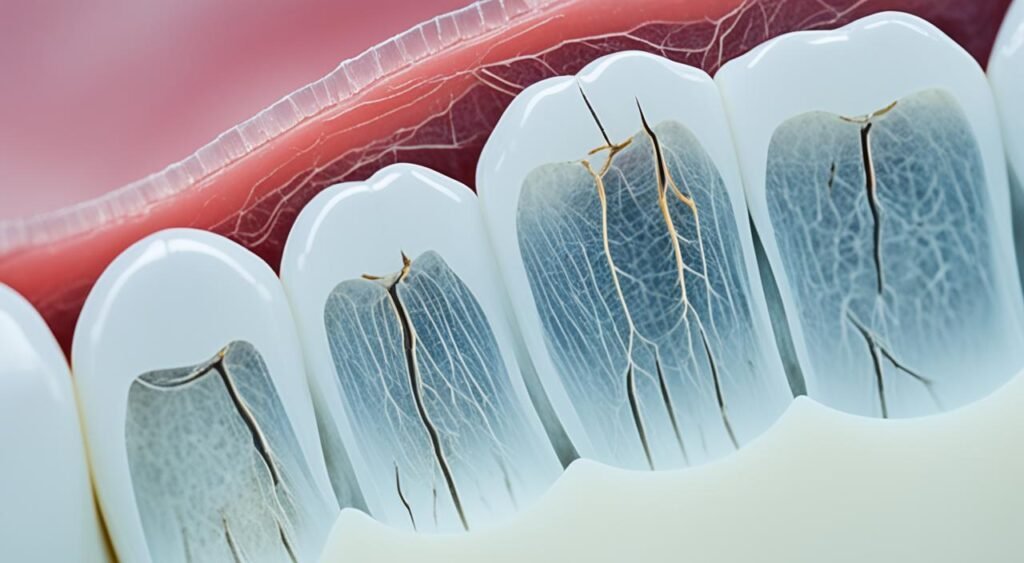
Teeth Hurt After Flossing: When to See a Dentist
If you feel pain after flossing, it might be a sign you need to check your dental health. Knowing when to go to the dentist is key. It helps to understand issues like loose dental restorations and other dental problems.
Loose Dental Restorations
Loose dental restorations, like crowns or fillings, can hurt when you floss. They might not fit right and can make sensitive parts of your tooth ache. If you think your dental work is loose, you should:
- Look for signs of loose restorations yourself or notice symptoms.
- Make an appointment with a dentist for a check-up.
Other Underlying Dental Issues
Continued pain when flossing could mean there are deeper dental problems. Things like cavities or infections can make your teeth more sensitive. It’s important to notice these signs. If you’re worried about decay or still feel pain, you should:
- Book a dental visit for a detailed check-up.
- Talk to your dentist about your ongoing symptoms to find treatment.
Conclusion
Many people feel pain or discomfort after flossing. Knowing why, like bad technique or dental problems, helps find relief and improve oral health. Over 40% of people use odd items to clean between their teeth, which can hurt.
Using the right tools, like waxed floss or interdental brushes, can change your routine for the better. Tooth sensitivity can also make flossing painful, often due to worn enamel or dental issues. It’s important to follow good dental care tips, such as gentle flossing and regular dentist visits.
If you keep feeling pain while or after flossing, it’s time to see a dentist. They can check for gum disease or decay. In short, good flossing is key for your mouth’s health. By improving your flossing and getting advice when needed, you can make flossing pain-free.
FAQ
Why do my teeth hurt after flossing?
Teeth may hurt after flossing because of wrong technique, sensitivity, or gum irritation. Dental problems like loose fillings can also cause pain.
How can I relieve tooth pain after flossing?
To ease tooth pain after flossing, use gentle methods. Try special toothpaste for sensitive teeth. If the pain doesn’t go away, see your dentist.
What are the common causes of dental pain after flossing?
Dental pain after flossing can come from being new to it, using too much force, gum disease, or sensitive teeth from enamel loss.
Are there specific flossing techniques to prevent gum pain?
Yes, to avoid gum pain, floss gently with a back-and-forth motion. Use the right tools and adjust your flossing method.
How can I manage tooth sensitivity after flossing?
To handle tooth sensitivity, use desensitizing toothpaste. Stay away from acidic foods. Brush and floss gently.
What symptoms indicate potential gum disease?
Gum disease signs include swollen or bleeding gums, bad breath that won’t go away, and deep pockets around teeth.
When should I see a dentist about flossing pain?
See a dentist if you have ongoing pain, notice loose fillings, or think there might be cavities or infections.
Can dietary changes impact tooth sensitivity?
Yes, eating less acidic foods and drinks can lessen tooth sensitivity. This is especially true when flossing.





